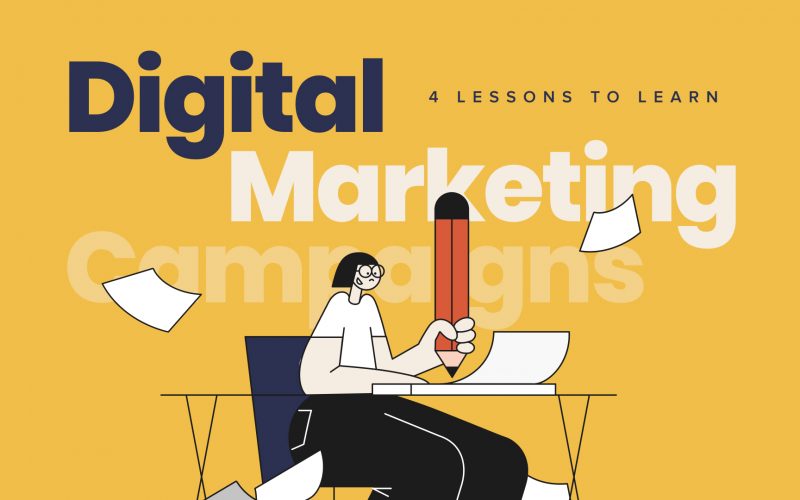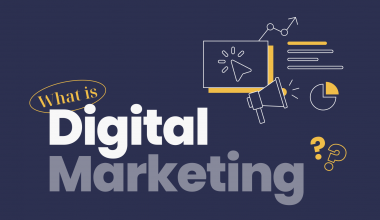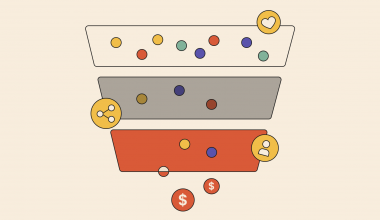Digital Marketing is a skill that needs to be constantly learned, relearned and kept up to date. As times go by, it can become a daunting task with all the dos and don’ts. Things can even get stale after a while when you run out of creative juices and strategies. So, before the year ends, let’s take a look back at some of the best digital marketing campaigns from the past years to get some inspiration.
1. FOMO & Influencer Marketing

The FOMO marketing strategy is not a foreign term in digital marketing. FOMO or Fear Of Missing Out is a psychological trick that plays on the consumers’ fear of missing out on opportunities. It encourages them to grab the chance to purchase the products at a limited time. This marketing strategy could appear in various kinds of ways in the digital world. For example, countdown timers and discount reminder emails.

YSL Malaysia’s campaign “YSL Beauty Raya” is an excellent example of innovative FOMO Marketing. Their use of the new marketing technique involves brand collaboration with KOLs sharing a “secret code” on TikTok has resulted in a total of 7388 new prospects being acquired (A+M). There were about 50 influencers who shout out about the secret code “YSL Beauty Raya” for consumers to redeem a complimentary mini lipstick across a five-day period. The most unexpected factor behind this campaign is the use of non-beauty-related influencers and the creative freedom the brand gave them. Without the need for YSL Malaysia to promote this campaign on their official social media, the influencer marketing was so effective that the gifts were fully redeemed in 48 hours.
Key Takeaways: A successful marketing campaign needs 3 things: a suitable social media platform, the influencers and the freebie. Nonetheless, it is encouraged to engage with influencers who are not subject matter experts to create a surprising element, just like YSL’s campaign.
2. Celebrity Endorsement
In the digital marketing world, celebrity endorsement may sometimes seem similar to influencer marketing. Both involve famous people who positively influence consumers’ perception of a brand or product. While sometimes an influencer can be as popular and influential as a celebrity, celebrities can create a bigger global buzz in most cases. The difference between celebrities and influencers is that celebrities gain fans through their music, shows or movies, whereas influencers gain followers based on their niche or interest. For instance, some of the famous K-pop celebrities are BTS, Enhypen and Seventeen, while PONY and Meiji Woo are make-up and fashion influencers.
Last year we’ve seen perhaps the biggest booster of McDonald’s Marketing campaign in history – the BTS Meal. Their collaboration with BTS skyrocketed their sales by a 40% increment. Not only it’s available in the US, but this Famous Order was also the first in history to have a global tour in nearly 50 countries. McDonald’s is not alien to celebrity endorsement, in fact, they’ve been using this strategy since 1992 when they collaborated with Micheal Jordan. Their viral Travis Scott Burger has also gained national attention across the US which causes a shortage of the Quarter Pounder Burger.

On the other hand, BTS is also a familiar brand face. They have been endorsing a number of brands such as Samsung, Coway, Hyundai, Fila and Puma, to name a few. With their global popularity and their enormous fanbase, all of their endorsements have proven successful campaigns.
This year, we have also seen a number of successful celebrity endorsement marketing campaigns in Southeast Asia. Some of them are Mister Potato with Astro’s Cha Eun Woo and Milo Malaysia with Korean Heartthrob Actor Park Seo Joon. With their dashing appearance and handsome faces, they not only cause a big stir but also increase sales, Milo packets with Park Seo Joon’s face were sold out in a day.

Key Takeaways: With K-wave surfing through the world, engaging with Korean celebrities is a foolproof way to heighten brand awareness and create an impactful campaign. However, you should be extra mindful when you’re deciding on your ambassador. He/she should share your brand values and personalities for a cooperative partnership.
3. Dance Challenges
Since TikTok unexpectedly blew up the world during the pandemic, viral dance videos have become a genre in itself and a trend to stay. You must have heard about them, or seen one or two, because they are all over the Internet, not just on TikTok. It’s not new to see dance challenges and covers cross-posted on Instagram, Facebook and Youtube Shorts featuring either K-pop dance challenges, viral dances or old-school hits.
TikTok dance trends are addictive, influential, powerful and relatable. Although dancing online is a social media trend introduced by the Millennials and Gen Z, it doesn’t discriminate. Everyone, from the Baby Boomers to young kids and even pets, regardless of age, gender, race, or religion, is welcome to join in the dance trends. This could be seen in the K-pop group, BTS’s Permission To Dance Challenge where they invited people from all over the world to dance with them.
Not only that, dance videos have become the second most popular and viewed content on TikTok, garnering approximately 181 billion views. Watching and recreating dance videos could trigger a spike in dopamine and a sense of social involvement (TheList). This explains why dance challenges are pivotal and effective to be incorporated into marketing campaigns.
Here are two great examples of brands that use dance challenges in their marketing campaigns. In December 2020, Pizza Hut Malaysia started their #PizzaHutPullDipPop dance challenge to promote their new Cheesy Poppers Pizza. The hashtag #PizzaHutPullDipPop has garnered around 67.2 million views.
Similarly, the skincare brand, Cetaphil also started their #Cetaphil5soss dance challenge in May 2021 which has 91.5 million views.
Key Takeaways: Infusing dance challenges into your marketing strategy could help increase your brand awareness, and engagement and reach a wider audience. The keys to an effective dance challenge are interesting background music and simple dance movements so that users are encouraged to participate.
4. Collaborative Marketing
Collaborative Marketing is an interesting spice to add to your marketing strategy. It is the collaboration between brands to either co-launch a new product or executes a campaign. This marketing strategy helps brands to gain new customers, and increase brand awareness and sales in a sector that they may not otherwise gain. The key to this strategy is to team up with a like-minded brand and strategize a plan that benefits both of you.
Brand collaboration can come in 2 ways: anticipated and unexpected. Lay’s and KFC’s collaboration is one of the most anticipated and exciting launches. Both brands are well-loved by the nation, hence, this collaborative marketing is a huge success across Southeast Asia. They had even started a #CrispyChipTongueTwister Challenge campaign to give out freebies.

On the other hand, the collaboration between the ice cream brand, Inside Scoop and soy sauce, Hamadaya came off as a unique combination. Who would’ve thought of putting soy sauce on ice cream? The public was sceptical about the collaboration at first, as it was new and foreign. However, after their hardworking effort of teasing, promoting and encouraging on Instagram, they started gaining acceptance and even compliments from the users.

Key Takeaways: Don’t be afraid to collaborate with brands that are completely irrelevant to yours. You’ll never know what sparks you all could pull off! However, be sure to lay down the ground rules, terms, conditions and expectations before collaborating to ensure a peaceful and understanding partnership.
In short, with some out-of-the-box creativity and innovation, paired with suitable marketing strategies, brands could create impactful campaigns that “wow” their current customers and gain more brand awareness. Through analysing past campaigns, we can learn from the best and improve our own projects.






